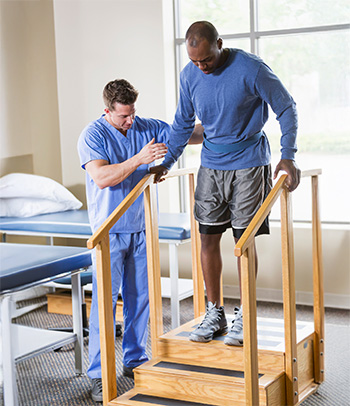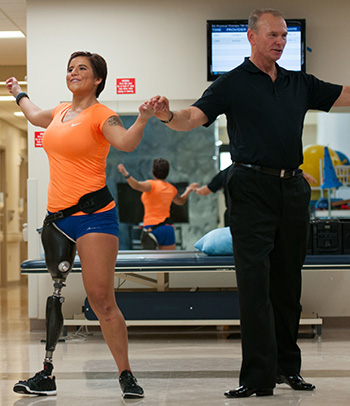The work you do in occupational therapy can improve your health, make it easier to participate in different activities, and improve your quality of life.
While physical therapy is widely recognized, occupational therapy remains less understood. Despite its significance, many are not fully aware of its scope and applications.
Learn more about occupational therapy, what it’s used for, and what resources are available to meet your needs.
What Is Occupational Therapy?
Occupational therapy involves the therapeutic use of everyday life activities to promote health, wellness, and participation in the home, school, workplace, and community.
An occupational therapist designs customized interventions to improve your quality of life, help you learn how to move through your environment, use different tools to help you participate in activities safely, perform your daily routine, and reach your goals.
Examples of occupational therapy can include:
- Productivity: Helping a child with a developmental disability use scissors or a pencil to fully participate in school.
- Self-care: Helping someone recovering from a stroke learn how to dress and brush their teeth to continue living independently.
- Assistive technology: Helping someone learn to use a wheelchair or a walker after an injury to continue moving safely throughout their home.
- Environmental adaptation: Modifying the home or workplace to better suit someone’s needs, such as wheelchair ramps, lower work surfaces, and voice recognition software.
What Can Occupational Therapy Help Treat?
 Occupational therapy can help you with injuries, conditions, or disabilities that make it harder for you to go through your daily routine. The work you do in occupational therapy can improve your health, make it easier to participate in different activities, and improve your quality of life.
Occupational therapy can help you with injuries, conditions, or disabilities that make it harder for you to go through your daily routine. The work you do in occupational therapy can improve your health, make it easier to participate in different activities, and improve your quality of life.
Reasons why you might need occupational therapy include (but are not limited to):
- Physical disabilities
- Recovery from injuries such as fractures, burns, or amputations.
- Conditions like arthritis, multiple sclerosis, or cerebral palsy.
- Post-surgical rehabilitation, such as after joint replacements.
- Developmental disorders
- Autism spectrum disorder (ASD).
- Attention deficit hyperactivity disorder (ADHD).
- Developmental delays in children.
- Neurological conditions
- Stroke or traumatic brain injury (TBI).
- Parkinson’s disease or other movement disorders.
- Spinal cord injuries.
- Mental health issues
- Depression, anxiety, or bipolar disorder.
- Post-traumatic stress disorder (PTSD).
- Sensory processing disorders
- Chronic conditions
- Cardiopulmonary conditions like chronic obstructive pulmonary disease (COPD) or heart disease.
- Diabetes management, particularly for complications affecting daily activities.
- Aging-related issues
- Age-related decline in physical or cognitive abilities.
- Fall prevention and mobility issues.
- Work-related injuries
- Repetitive strain injuries, such as carpal tunnel syndrome.
- Ergonomic issues leading to musculoskeletal problems.
What Does Occupational Therapy Look Like?
 Occupational therapy looks different depending on each patient’s unique needs and goals, but according to the American Occupational Therapy Association, there are some commonalities you can expect while working with an occupational therapist.
Occupational therapy looks different depending on each patient’s unique needs and goals, but according to the American Occupational Therapy Association, there are some commonalities you can expect while working with an occupational therapist.
To start, you will usually get a referral from a health care provider. Then your occupational therapist will complete an intake assessment, getting to know you, your daily routines, your goals, and any barriers to success you’re experiencing. From there, your therapist will work with you—and sometimes also with family members—to design a custom intervention or plan to help you perform your daily activities and reach your goals. It may include practicing everyday skills like getting dressed or doing chores, learning to safely use a medical aid such as a walker, doing exercises to increase strength or coordination, or practicing a skill necessary for work or school. Your therapist will monitor your progress, adjust your interventions, and suggest changes if necessary.
Occupational therapy can be performed in several locations, including outpatient clinics, inpatient settings, nursing homes, community living centers, schools, your home, and even through telehealth options. Like other therapies, it can feel difficult at first. Your body and mind may feel tired and worn out after a therapy session, but the skills you’re practicing will get easier over time and may help you rebuild independence and improve your quality of life.
Resources
- TRICARE covers occupational therapy in certain instances to improve, restore, or maintain function or to minimize or prevent deterioration of function. Look into your TRICARE plan to learn more about your occupational therapy benefit.
- The Department of Veterans Affairs (VA) provides occupational therapy evaluation and treatment services to Veterans and Service members. Find out what your health care plan covers and learn more about how VA uses occupational therapy to help Veterans and Service members thrive.
Optimize your independence and quality of life. Talk to your health care provider about whether occupational therapy may be right for you.







